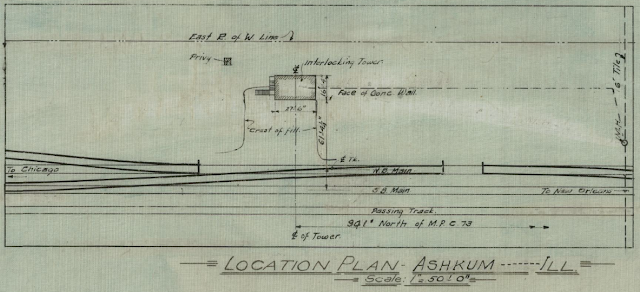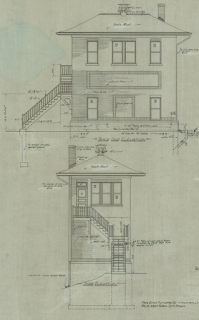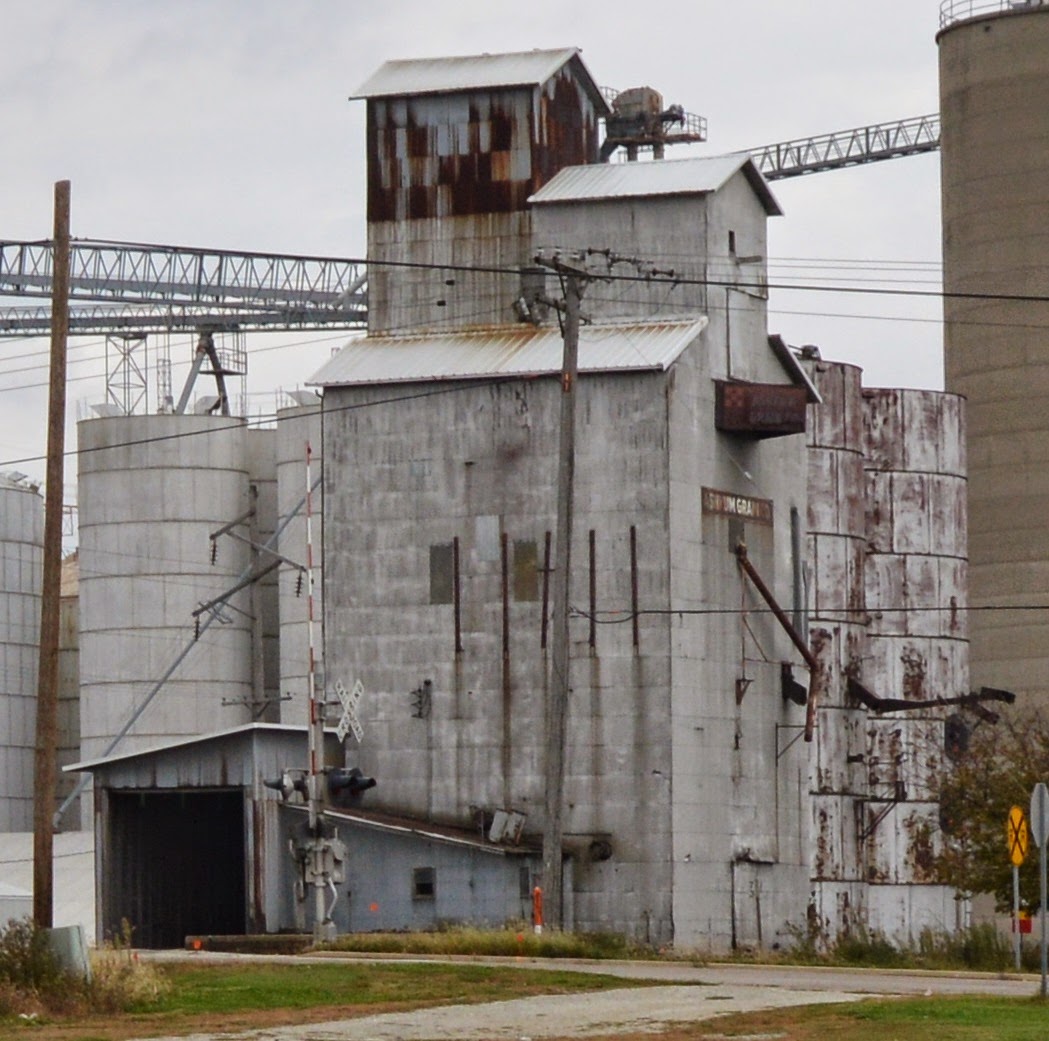(This was originally written in October, 2014, in the
Industrial History Blog.)
An overview of the grain elevators looking south.
 |
| 20141013 0093, Ashkum, IL, looking South |
The equipment on the north side is obviously the newer stuff. Here is a closeup of the storage facilities south of the newer concrete silos.
This is the southernmost storage unit, and it is no longer used. The building on the right is the old train depot. Looking at the 1940 aerial photo below, I don't think the round silos had been built.
This other old unit is still used to mix dry and wet batches of soybeans to achieve an average moisture of 13% or less. Looking at the 1940 aerial photo below, the steel covered structure is present. But I don't think the two round blobs to the north are the round silos that we see today. So in 1940 the storage capacity of Ashkum was just a couple of rectangular buildings.
By studying a satellite image, I determined that the service track for the elevator extends 3/4 mile north and south of the loading zone. I wonder if 3/4 mile is long enough to handle a unit-train of 65 cars.
Turning our attention to the newer facilities. The yellow rail is a fall protector. A bracket with a rope rolls along the rail. When someone is on top of the cars to open and close the hatches, their safety harness is attached to the rope.
You can see stages of expansion beginning with the track side concrete towers and ending with the huge steel bins. The "wall" in the foreground with blue fans attached to it is ground storage. Grain would be heaped up inside those walls and covered with tarps that were probably weighed down by old tires. They haven't used it for a few years since they built the steel bins. The total capacity is now 4 million bushels.
To complete our view of the ground storage, here is an inside view. You can see that there are black plastic ducts attached to each fan to help get the air circulation to the middle. They may have to use the ground storage again this year because corn is still left over from the 2013 bumper crop and because this years (2014) crop is supposed to be even better. It is predicted that the amount of corn that is supposed to be harvested is more than the total storage capacity in the United States.

The need for visitors to register at seed plants and grain elevators seems to be a USDA regulation. As if terrorists who plan to poison the food supply will register. (The camera was straight, it is the sign that is crooked.) I did check in at the office, but I didn't have to sign anything. There were no trucks at the elevator even though October 13 was in the middle of the harvest season. The reason is that rain storms were blowing through the area, and farmers can't combine when it is raining. I was lucky to have just clouds, no rain, most of my trip. And the staff did not mind talking to me since they were not busy. If there was a line of truck drivers waiting to unload, I would have been reluctant to join that line to explain why I wanted pictures and to get permission.
After I took pictures of a
southbound train, I got the following overview of everything except the southern most unit, which I mentioned is no longer used. The brick building you can see below is the office.
I went up the access road between the track side silos and the additional phases of expansion. In the foreground is one of the truck unloading pits. The skinny towers are
grain dryers. They use natural gas instead of propane, so they were not impacted by the propane shortage that hit the country last winter. I assume there are two legs so that one can deliver grain from an unloading pit to a dryer while the other can move the dried grain to a storage bin. (Update: There is enough redundancy of connections between the two legs that I now think there are two legs so that both unloading pits can transfer grain to a wet bin at the same time. When not unloading a truck, they can use either leg to transfer from a wet bin to a dryer or from the dryer to one of the big storage bins in the back.)
On Dec. 9th, 2014, after the harvest season was over, I did a quick stop off of I-57 to see if they had used their old ground storage facility since all of the elevators were supposed to be full in 2014. They had not. I think there was corn left in the fields later than usual in some areas. That is, leaving the corn on the stalk longer than usual provided more storage for the crop.
 |
Marty Bernard posted
ICG SD20 2040, SD20 2011, and SD40A 6014 and train on March 17, 1990 at Ashkum, IL.
Marty Bernard shared |
Marty was a lot farther South than I got.
And I didn't get an angle that included the
IC depot.
 |
| 1 of 4 posted by Brad Brown, cropped |










































.jpg)






